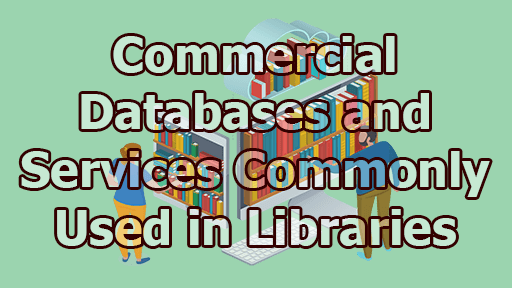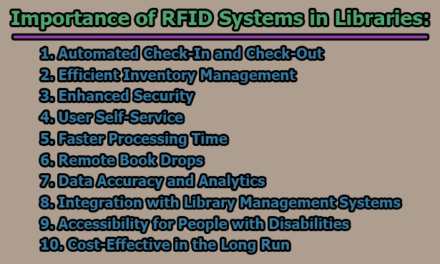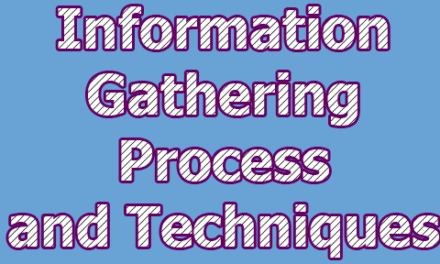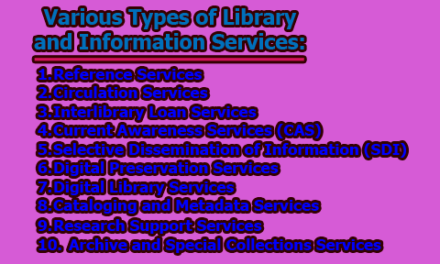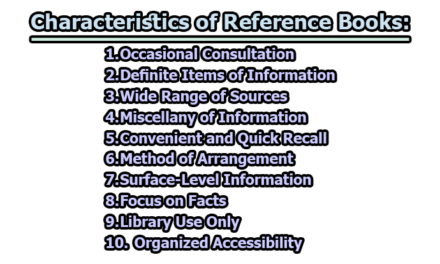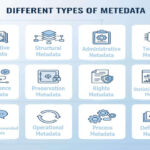Commercial Databases and Services Commonly Used in Libraries:
Commercial databases and services play a crucial role in modern libraries, providing access to a wide range of information resources for researchers, students, and the general public. These databases and services offer digital access to journals, books, research papers, multimedia content, and more. Here’s an overview of commercial databases and services commonly used in libraries:
- EBSCOhost:
- Content: EBSCOhost boasts an extensive collection of scholarly journals, magazines, newspapers, e-books, and other academic resources. It covers a broad spectrum of disciplines, making it suitable for various research needs.
- Features: EBSCOhost offers powerful search capabilities with options to refine searches through filters like date, publication type, and source. It also provides tools for citation management and exporting references.
- User Interface: Known for its user-friendly interface, EBSCOhost allows users to create personalized accounts, save searches, and set up alerts for new content.
- Access: Libraries often subscribe to specific EBSCO databases or purchase packages that include multiple databases, making them accessible to their patrons.
- ProQuest:
- Content: ProQuest’s extensive content library encompasses academic journals, dissertations, newspapers, historical archives, and multidisciplinary resources. It is particularly known for its rich collection of theses and dissertations.
- Features: ProQuest offers advanced search options, including the ability to search within specific fields (e.g., title, abstract). It also provides citation tools and allows users to create personal research profiles.
- User Interface: ProQuest’s user interface is intuitive, making it easy to navigate and discover relevant research materials.
- Access: Libraries often choose from a variety of ProQuest databases based on their patrons’ needs and the institution’s budget.
- ScienceDirect:
- Content: ScienceDirect specializes in scientific and technical research, providing access to a vast array of peer-reviewed journals, conference papers, and scientific articles across multiple disciplines.
- Features: Users can benefit from advanced search functionalities, including topic clusters and suggested articles based on their searches. It also offers features like interactive plots and data visualization tools.
- User Interface: ScienceDirect’s interface is designed to facilitate researchers’ workflows, with easy access to full-text articles and downloadable PDFs.
- Access: Typically, academic and research libraries subscribe to ScienceDirect to provide access to their affiliated users.
- JSTOR:
- Content: JSTOR is renowned for its archival collections, providing access to historical and academic journals, books, and primary source materials. It predominantly covers the arts, humanities, and social sciences.
- Features: JSTOR offers a robust search platform with options to explore content by discipline, timeframe, and type. Users can also access themed collections and special exhibits.
- User Interface: The simplicity of JSTOR’s interface is one of its strengths, allowing users to easily browse and access scholarly materials.
- Access: JSTOR is commonly used in academic and research institutions, offering various subscription models and open access resources.
- Scopus:
- Content: Scopus is a comprehensive abstract and citation database spanning various disciplines, including science, technology, medicine, social sciences, and the arts.
- Features: It provides advanced citation analysis tools, author and institution profiles, and integration with reference management software. Researchers can track citations and assess the impact of their work.
- User Interface: Scopus caters to research professionals, offering a sophisticated interface for in-depth exploration of academic literature.
- Access: Academic and research libraries subscribe to Scopus to support scholarly research and bibliometric analysis.
- PubMed:
- Content: PubMed primarily focuses on biomedical and life sciences literature, including articles, clinical studies, and medical research. It includes publications from journals, research institutions, and government agencies.
- Features: PubMed offers advanced search filters for precise retrieval of medical literature. It links to full-text articles when available and provides access to related resources like PubMed Central.
- User Interface: Designed for healthcare professionals and researchers, PubMed’s interface prioritizes ease of use and access to the latest medical research.
- Access: PubMed is an open-access resource, freely available to the public, making it a valuable tool for both professionals and the general public.
- Gale Databases:
- Content: Gale databases cover a wide spectrum of topics, including historical archives, literary works, educational resources, and reference materials. These resources are suitable for students, educators, and researchers.
- Features: Gale provides tools like the topic finder, which aids in exploratory research, and the ability to integrate content into curricula, making it valuable for educators.
- User Interface: Gale’s interfaces are designed to be user-friendly and supportive of educational and research activities.
- Access: Libraries and educational institutions often subscribe to specific Gale databases to serve their users’ needs, especially in K-12 and higher education environments.
- LexisNexis:
- Content: LexisNexis specializes in legal, business, and news content, providing access to court cases, legal documents, news articles, company information, and more.
- Features: LexisNexis offers powerful search capabilities with extensive legal research tools, including access to statutes, regulations, and case law. It also provides analytics for legal professionals.
- User Interface: Tailored for legal practitioners, LexisNexis offers a comprehensive platform for legal research and analysis.
- Access: LexisNexis is primarily used in law libraries, academic institutions with law programs, and legal firms.
- SpringerLink:
- Content: SpringerLink is a prominent database for scientific and technical research, offering access to a vast collection of academic journals, books, and conference proceedings, with a strong focus on STEM (Science, Technology, Engineering, and Mathematics) fields.
- Features: It provides robust search functionalities, citation tools, and interactive features like 3D visualizations and supplementary materials.
- User Interface: SpringerLink’s interface is designed to facilitate research workflows, with options for personalization and collaboration features.
- Access: Universities and research institutions often subscribe to SpringerLink, granting their students and faculty access to its extensive resources.
- Wiley Online Library:
- Content: Wiley Online Library offers a broad spectrum of academic and professional resources, including journals, books, and reference materials, covering various fields such as science, engineering, humanities, and social sciences.
- Features: It provides advanced search options, reference linking, and tools for citation management. Wiley also offers open-access options for some of its content.
- User Interface: Wiley’s user interface is user-friendly and supports browsing, searching, and downloading of scholarly content.
- Access: Academic libraries commonly subscribe to Wiley Online Library to provide access to their patrons.
- ERIC (Education Resources Information Center):
- Content: ERIC is a specialized database for education-related research, containing journal articles, reports, and other materials related to educational practices, policies, and pedagogy.
- Features: ERIC offers precise searching within the education domain, including options to filter by grade level, audience, and resource type.
- User Interface: ERIC’s interface caters to educators, researchers, and policymakers, with tools for saving searches and exporting citations.
- Access: ERIC is often freely available to the public, making it a valuable resource for educators, students, and anyone interested in education research.
- IEEE Xplore Digital Library:
- Content: IEEE Xplore is a comprehensive database for electrical engineering, computer science, and electronics research, providing access to journals, conference proceedings, standards, and technical literature.
- Features: It offers advanced search and navigation features, including access to the IEEE Standards Dictionary Online and tools for managing research references.
- User Interface: IEEE Xplore’s interface is tailored for engineers, scientists, and researchers, with options for browsing by technology topic.
- Access: Academic and research institutions often subscribe to IEEE Xplore to support engineering and technology research.
- DynaMed:
- Content: DynaMed is a clinical reference tool designed for healthcare professionals, offering evidence-based medical information, clinical guidelines, drug information, and medical calculators.
- Features: It provides point-of-care decision support, mobile access, and updates on clinical topics. Users can earn continuing medical education (CME) credits through the platform.
- User Interface: DynaMed’s interface is intuitive, with easy navigation and access to concise, up-to-date medical content.
- Access: Hospitals, medical schools, and healthcare institutions often subscribe to DynaMed for their healthcare professionals.
14. Market Research Databases: In addition to academic and scientific databases, libraries may subscribe to market research databases like Statista, Mintel, and IBISWorld. These resources provide market reports, statistics, and industry analysis, serving the needs of business students and entrepreneurs.
Market research databases often include features like data visualization tools, customizable reports, and trend analysis.
15. Multimedia Databases: Some libraries subscribe to multimedia databases like Kanopy (for streaming video content), ARTstor (for visual arts and cultural heritage), and Naxos Music Library (for classical music). These databases enrich the learning experience by providing access to audiovisual materials.
Multimedia databases may offer unique features such as playlists, annotations, and integration with learning management systems.
It is apparent that commercial databases and services are integral to the modern library’s ability to provide comprehensive and up-to-date information resources to their patrons. These resources cater to a wide range of academic disciplines and research needs, supporting the educational and research missions of institutions and serving the broader community. Libraries carefully select and manage their database subscriptions to ensure that their users have access to the most relevant and reliable information available.
References:
- American Library Association. (2020). Choosing a Database for Your Library. ALA Editions.
- Marshall, L., & Ruuskanen, T. (Eds.). (2020). Library Services during the COVID-19 Pandemic: A Global Perspective. IGI Global.
- Evans, G. E., & Alire, C. A. (2013). Management Basics for Information Professionals. American Library Association.
- Harerimana, G. (2017). Selection and Use of Online Databases by Academic Libraries in Rwanda. International Journal of Computer Applications, 169(5), 27-32.
- Liew, C. L. (2017). Librarians’ Perception on the Impact of Electronic Databases in Malaysian University Libraries. Library Philosophy and Practice, 1-14.
- Rowley, J. (2017). Library Management and Marketing in a Multicultural World: A Handbook. Elsevier.
- Rupp-Serrano, K., & Jackson, C. (2020). Academic Libraries and the Academy: Strategies and Approaches to Demonstrate Your Value, Impact, and Return on Investment. Rowman & Littlefield.
- Watson, J. R., & Gwinnett, A. J. (2019). The Role of Subscription Databases in the New Information Landscape. Library Hi Tech News, 36(9), 1-4.
- Tucci, V., & Cecchetti, G. (2019). Using Electronic Resources in the Digital Library: A Reference Guide. IGI Global.
- Banks, M. (2016). Cultural Diversity and Social Media: A Renewed Perspective on Global Digital Participation. Routledge.

Library Lecturer at Nurul Amin Degree College

